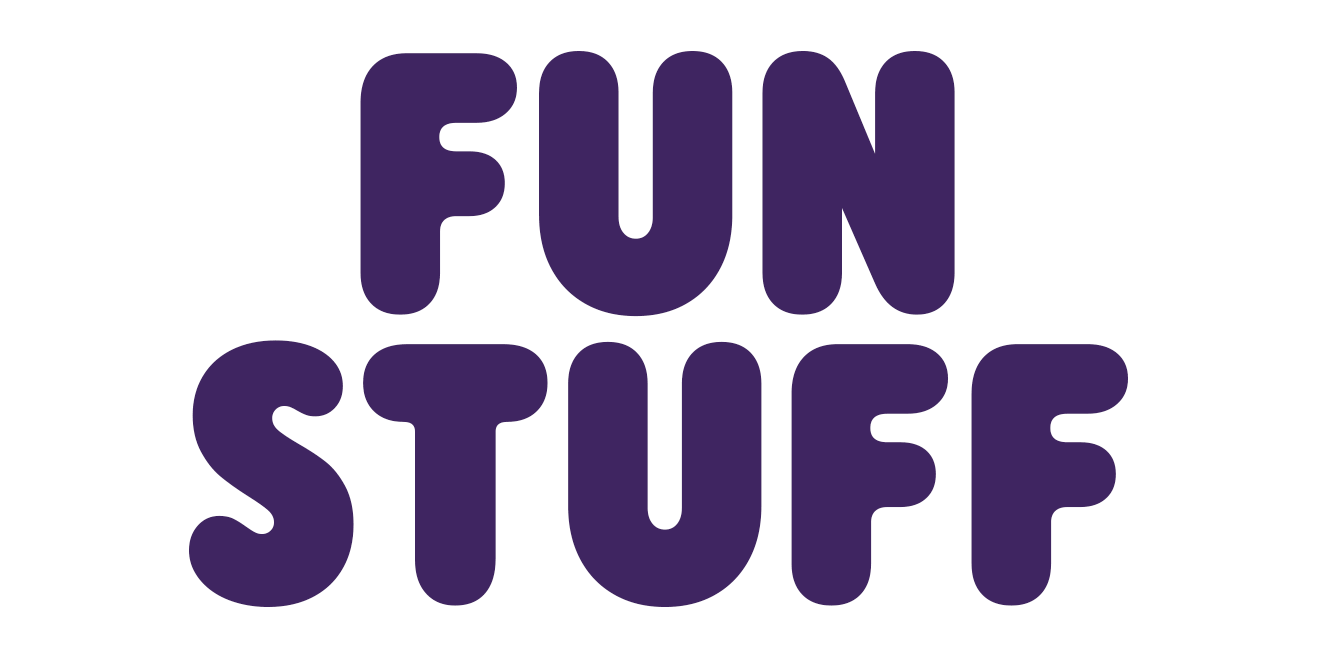Figure 6 shows the differences in sheep and pig skulls. Mandibular depression mechanism: The depression of the lower jaw (mandible) pulls or pushes the premaxilla into protrusion via force transmission through ligaments and tendons connected to the upper jaws (e.g. Jaws are thought to derive from the pharyngeal arches that support the gills in fish. In the case of hammerheads the rostrum (hammer) extends both ventrally and laterally (sideways). The other morph has its jaw twisted to the right, which makes it easier to eat scales on its victim's left flank. Twisting maxilla mechanism: The depression of the mandible causes the maxilla to twist about the longitudinal axis resulting in the protrusion of the premaxilla (e.g. [34][35][36] Shark teeth are embedded in the gums rather than directly affixed to the jaw as in some fish. Science Teaching Supplies and Nature Gifts, It's a rabbit, specifically a jackrabbit, not a rodent. 1. r/fossilid. In bony fish, both maxilla and premaxilla are relatively plate-like bones, forming only the sides of the upper jaw, and part of the face, with the premaxilla also forming the lower boundary of the nostrils. This is of great advantage, enabling them to grab prey and draw it into the mouth. We use cookies on our website to give you the most relevant experience by remembering your preferences and repeat visits. Generally jaws are articulated and oppose vertically, comprising an upper jaw and a lower jaw and can bear numerous ordered teeth. The arrangement of soft tissue and any additional articulations connecting these elements is collectively known as the jaw suspension. Ostracoderms were vertebrate fishes encased in bony armor, unlike present-day jawless fishes, which lack bone in their scales. Links to a number of important fish websites are listed below. In modern species which are sensitive to over 1 kHz frequencies, the footplate of the stapes is 1/20th the area of the tympanum. These formulas can be used by biologists to help accurately identify skulls and to assist in categorizing animals into families and subgroups. Paleontologists believe the ancient fish species' jaw. The inner surface of the jaw is lined by a prearticular bone, while the articular bone forms the articulation with the skull proper. Now that you know the basics, let's try to narrow down the type of animal you have. Even if you arent able to identify the species you can still tell some really interesting stuff about the animal and how it lives its life. [18], Some teleosts use more than one of these mechanisms (e.g. Species that feed on pods or seeds require large conical teeth for chewing their food. In orbitostyly, the orbital process hinges with the orbital wall and the hyoid provides the majority of suspensory support. PO Box 97 14200 Solomons Island Road Solomons, MD 20688 Ph: 410-326-2042 Fx: 410-326-6691 Email Us Membership Inquiries Teeth are absent from the vomer and palatine bones. Instead, their lower jaw is composed of a cartilaginous structure homologous with the Meckel's cartilage of other groups. Unlike the oral jaw, the pharyngeal jaw has no jaw joint, but is supported instead by a sling of muscles. One morph has its jaw twisted to the left, allowing it to eat scales more readily on its victim's right flank. The second type of tooth depicted, the molar, is . The pharyngeal jaws of most fishes are not mobile. Many teleost fish have substantially modified jaws for suction feeding and jaw protrusion, resulting in highly complex jaws with dozens of bones involved.[75]. Some fish like carp and zebrafish have pharyngeal teeth only. Many common fossils have shapes that can look very bone-like. There are two species found in the UK - the common seal (also known as the harbour seal, Phoca vitulina) and the grey seal (Halichoerus grypus). Interested in having your collection on BoneID. The illustration is from Jordan, D.S. The appearance of the early vertebrate jaw has been described as "perhaps the most profound and radical evolutionary step in the vertebrate history". You'll have to practice skull identification, and looking at different types of teeth to get comfortable. Baleen plates can be more than a metre long in larger whales. A pheasant'sskull is around 7cm long. Find the perfect fish jaw fossil stock photo, image, vector, illustration or 360 image. I __/___ C __/___ P __/___ M___/___= ______ x2= _____ total teeth. This is a pamphlet style guide, about 10 pages, with information and pictures of common skulls of birds, mammals, fish, and reptiles. The number, shape, and size of teeth can help you determine what type of animal skull you've found. Their skulls are sometimes seen washed up on beaches. Badger In addition, some naturally occurring rocks look like bones (rocks that are mistaken for fossils are called pseudofossils). [15] The rostrums extend ventrally in front of the fish. The inner edges are frayed and strands intertwine to form a sieve. This fish can extend its jaws up to 65% the length of its head. Cohen, A. and 1991 Manual for the Identification of Bird Bones from Serjeantson, D. Archaeological Sites. Grey seals have either a single cusp or small additional cusps. The species had a bony skull and jaw-like most vertebrates, but was different with a beak-like jaw built out of bone plates. Available for both RF and RM licensing. Figure 4: Cattle and horse 1st metacarpals. Toothed whales have a globular cranium, a long or short narrow snout and small, peg- or wedge-shaped teeth. There are several groups of pharyngeal teeth that serve to direct food down the esophagus.[53][54]. Bone hair pins appear under the Beads and Decorative section of this site. The Australian Museum respects and acknowledges the Gadigalpeople as the FirstPeoples and Traditional Custodians of the land andwaterways on which theMuseumstands. dogfish) the hyomandibular of the hyoid arch forms a bridge . high-resolution X-ray computed tomography images. By contrast, mere closure of the jaws would risk pushing food out of the mouth. Different species may also appear the same size. Bony fishes have additional dermal bone, forming a more or less coherent skull roof in lungfish and holost fish. [6][7] The most thorough overview of the different types of linkages in animals has been provided by M. Muller,[8] who also designed a new classification system, which is especially well suited for biological systems. This is because they use their lower jaw to "scoop" grass and leaves, and then the vegetation is passed to the back molars for grinding (this scooping action is what animal trackers look at to know the difference between the shearing cuts of rabbit teeth and the ragged scoop of deer teeth on vegetation). Juvenile muntjac skull by Ellen Kinsley Muntjac deer Muntjac deer skulls can be identified by their large suborbital pits - the bones that sit under the eye sockets. Cattle and horse astralagi are also distinctive (see Figure 5). In more advanced teleosts, the premaxilla is enlarged and has teeth, while the maxilla is toothless. Often times you'll find skulls that are missing their lower jaws, teeth have fallen out, or various and sundry things have happened to the skull, so the teeth are hard to count or may be missing. Most herbivores have very flat molars and premolars in the back of their mouths (like we do) and they usually have scoop- like incisors (upper and/or lower). The grey seal has an elongated 'Roman nose' and its nostrils are parallel (they don't meet at the bottom). Hi there! Common seal skulls are about 23cm long; grey seals 27cm. Dentition of corvina ( Argyrosomus regius ). Or are they? A wealth of evidence from fossils and developing embryos suggests that two. Bones can at least help to identify broad groups of animals. This cookie is set by GDPR Cookie Consent plugin. Especially advanced are the linkage mechanisms of jaw protrusion. Spindle diagram for the evolution of fish and other vertebrate classes. [63][64] The earliest known fish with jaws are the now extinct placoderms[65] and spiny sharks. These Eocene fossils were preserved in intermountain lake basins while the Rocky Mountains were still growing! The cookie is used to store the user consent for the cookies in the category "Performance". As one can see in Figure 10, both dog and cat humerii have a hole (foramen) through the distal articulation. In these creatures, the teeth are "indeterminate" and grow continually. [70] It possessed a four bar linkage mechanism for jaw opening that incorporated connections between the skull, the thoracic shield, the lower jaw and the jaw muscles joined together by movable joints. This is because of what I mentioned earlier, bilateral symmetry. Plant in flint (?) It's also helpful if you have both jaws available,(upper and lower mandibles) though it's not required. Weasel's have long skulls with large eye sockets. Various spines (particularly from the preopercular bone) may be present on the . Scan the accumulated debris for mammal bones many of these will be the remains of domestic animals washed out to sea, but among them you should spot seal and whale bones. Try the dentition yourself first, then scroll to the bottom of the "jaw" image to see if you're correct. Then it grew longer and stronger, and acquired muscles capable of closing the developing jaw. The four-bar linkage is also responsible for protrusion of the premaxilla,[6] leading to three main four-bar linkage systems to generally describe the lateral and anterior expansion of the buccal cavity in fishes. The vertebral column and fins of a Striped Sea-bass. This "four-bar linkage" has the property of allowing numerous arrangements to achieve a given mechanical result (fast jaw protrusion or a forceful bite), thus decoupling morphology from function. Gogoselachus cartilage showing the separate units called tesserae making the up the lower jaw (left), and a thin section showing bone cells (red line) inside the matrix which binds the tesserae . Analytical cookies are used to understand how visitors interact with the website. In the resources I mention in my other post about good references for skull identification, you'll often find dental formulas listed for each type of animal. This page lists many of the terms used throughout the site. It is bordered below by a number of splenial bones, while the angle of the jaw is formed by a lower angular bone and a suprangular bone just above it. Weasel (Berkeley Lab) The cookie is used to store the user consent for the cookies in the category "Analytics". In some cases, like that of rabbits, beaver and other rodents, they may have orangish curved teeth for incisors. Horse 1st metacarpals consist of a single bone. These cookies ensure basic functionalities and security features of the website, anonymously. Like a skull detective! This is true for most animals. This cookie is set by GDPR Cookie Consent plugin. The canine is a long tooth that is generally shaped like a cone and is either straight or curved. Or, upload images of your bone(s) to ourFacebookpage for peer and professional advice and suggestions. Sawsharks and the critically endangered sawfish have rostrums (saws) which are both electro-sensitive and used for slashing. Enlarged teeth form an outer series in the upper jaw and an inner series on the lower jaw. For a more complete animal skull identification guide, we highly recommend the following books. Male Chinese water deer have large canine tusks but no antlers; the muntjac is the only species where males have both tusks and antlers. . [58][59], The customary view is that jaws are homologous to the gill arches. Caniniform teeth may be present at the front of both jaws. Copyright in these guides belongs to Jigsaw and the authors. Initially they were very successful, diversifying remarkably during the Devonian. Mole skull (back is missing) by Ellen Kinsley. Often one or the other is enough to help you. However, in early amphibians the stapes was too large, making the footplate area oversized . ", "Neural crest patterning and the evolution of the jaw", "Homologies and Evolutionary Transitions in Early Vertebrate History", "Monster fish crushed opposition with strongest bite ever", "Feeding mechanics and bite force modelling of the skull of Dunkleosteus terrelli, an ancient apex predator", "Prehistoric Fish Had Most Powerful Jaws". Registered charity number 207238 This is why animals that have them (except for rabbits) are called "rodents." In these species the jaw joint is also called the temporomandibular joint, or TMJ. A dental formula is quite simple, they just use letters to represent each type of tooth: After each number you will find two numbers that look like a fraction. The fish belonging to this group have no jaws. Identifying the full range of species that you could potentially find on an archaeological site requires access to a comparative collection and hours of study gaining experience with archaeological material. ", "Developmental and evolutionary origins of the pharyngeal apparatus", "Evolution and ecology of feeding in elasmobranchs", "Prey Capture Behavior and Feeding Mechanisms of Elasmobranchs", "Evolutionary history of Otophysi (Teleostei), a major clade of the modern freshwater fishes: Pangaean origin and Mesozoic radiation", "Do Carp Have Teeth? The image above came from a great website, called Will's Skull Page. Cosmoid scales are found in the Lungfishes (family Ceratodidae) and some fossil fishes. In bony fish, the maxilla is called the "upper maxilla," with the mandible being the "lower maxilla". Spiny sharks did not diversify as much as placoderms, but survived much longer into the Early Permian about 290 million years ago. Marine mammals have a range of adaptations that help distinguish them from terrestrial mammals. Movements of the neurocranium are not coupled with the kinematics of the upper jaw (e.g. Most species of jawfish have very interesting body colors and patterns. The spotted bass also has all black spots below the lateral line (the rear edges of certain scales are black) unlike either the largemouth or the smallmouth. (gular bone) on ventral surface of head between lower jaw bones; dorsal fin base many times longer than height of fin; scales cycloid Jaws probably originated in the pharyngeal arches supporting the gills of jawless fish. Cartilaginous fishes, such as sharks and rays, have one set of oral jaws made mainly of cartilage. Blunt spines are present under the loose skin. As one can see in Figure 4, cattle metacarpals are formed of two fused bones leaving a groove between the two. The morning after a spring gale is an ideal time to walk along the beach to see what has been washed ashore. Some of the earliest jawless fishes were the ostracoderms (Greek for "bone-skin"). In most vertebrates, the foremost part of the upper jaw, to which the incisors are attached in mammals consists of a separate pair of bones, the premaxillae. You would double that for a full tooth count. Bones are made from a composite of organic components, such as collagen and fats, and inorganic minerals such as calcium. Their upper jaw is instead formed from a cartilagenous bar that is not homologous with the bone found in other vertebrates.[14]. The type species D. terrelli was originally described in 1873 as a species of Dinichthys, its specific epithet chosen in honor of Jay Terrell, the fossil's discoverer. How to identify mammal bones on the seashore, SPECIAL JANUARY SALE OFFER - Get 3 issues of BBC Wildlife Magazine for just 5. Barred Javelin, Pomadasys kaakan (Cuvier, 1830). As the name implies, the majority of the teeth are attached to the dentary, but there are commonly also teeth on the coronoid bones, and sometimes on the prearticular as well. The structural diversity of the lower pharyngeal jaw could be one of the reasons for the occurrence of so many cichlid species. [76] In early fish and in chondrichthyans (cartilaginous fish such as sharks), Meckel's cartilage continued to be the main component of the lower jaw. Instead, the hyomandibular cartilages provide the only means of jaw support, while the ceratohyal and basihyal elements articulate with the lower jaw, but are disconnected from the rest of the hyoid. Check out our fish jaw bone selection for the very best in unique or custom, handmade pieces from our shops. Cartilaginous fish lack ribs and bone marrow. The formation of a jaw joint, an important step in the transition from an un-jointed pharynx in agnathans to a hinged jaw in gnathostomes involves interaction between nkx3.2, hand2, and barx1 factors. The most useful are listed below: Hillson, S. 2002 Mammal Bones and Teeth: An Introductory Guide to Methods of Identification. Try your hand at the dentition of this red fox skull. It's waterproof and easy to carry into the field. Slender, round body. There are several archetypal jaw suspensions: amphistyly, orbitostyly, hyostyly, and euhyostyly. These can be seen in Figure 2. They are shown here for identification purposes, as these same fossils can be found at the Calvert Cliffs. A team of scientists on Wednesday reported . The lower jaw has no ethmoid membrane (floor) and is attached only by the hinge and a modified tongue bone. The lower fins are white-tipped and the tail is square. But watch out - sometimes the teeth may have fallen out. The rodent could only eat from one side of its mouth which led to starvation,apparently the cause of its death. The top number represents the number of a particular teeth in the top mandible (or mouth) and the bottom number represents the number of a particular type of teeth in the lower mandible or jaw. It has a layer of tiny hexagonal plates called "tesserae", which are crystal blocks of calcium salts arranged as a mosaic. Finally, in euhyostyly, also known as true hyostyly, the mandibular cartilages lack a ligamentous connection to the cranium. 1997. Regulated by the Fundraising Regulator. Look for eyes above the nose in humans. Notice, some of the back molars are just erupting, and we only have the top mandible. Figure 7: Sheep and pig 1st molars (lower). When you see dinosaur skeletons in a museum, youre not actually looking at their bones but their geologically based replacements. The relative abundance of the two morphs in populations is regulated by frequency-dependent selection.[45][46][47]. As one can see horse teeth are much squarer in profile and plan compared to cattle teeth with a radically different enamel fold pattern. Found a bird skull or mammal bone in the UK? Examples within the fossil record date back to 500 million years . Here's the answer if you're not sure: I 3/3, C1/1, PM 4/4, M 2/3 = 21 x 2 = 42. The images on this page show the bones of a Striped Sea-bass, Morone saxatilis. The thornback ray has teeth adapted to feed on crabs, shrimps and small fish. My favorite book, "The Wild Mammals of Missouri" has a great combination of pictures of animals, their skull, lower jaw, tracks, descriptions, and a dental formula. We also use third-party cookies that help us analyze and understand how you use this website. The oral jaws are used to capture and manipulate prey by biting and crushing. The jaws consist of separate hoops of cartilage, almost always distinct from the cranium proper. Advanced features of this website require that you enable JavaScript in your browser. Facey. The pharyngeal jaws, so-called because they are positioned within the pharynx, are used to further process the food and move it from the mouth to the stomach.[2][3]. As mentioned at the start of this guide it takes time gaining experience handling a variety of bones both on site and in reference collections to become proficient in identifying a wider range of species. You can unsubscribe at any time. This Q&A originally appeared in BBC Wildlife Magazine, and was answered by Professor Ben Garrod. Molars (turquoise) also vary, depending on their use. Site Credit: BoneID is a visual guide for forensic anthropologists, law enforcement, naturalists, and the simply curious. First, is it a carnivore, herbivore, or omnivore? The most important differences to note are the much smaller skull vault in horses compared to cattle and the difference jaw shape. Males have prominent tusks too. Is it a thick, short beak for cracking open seeds, or a thin beak like tweezers for picking up little insects? Dark green or blue with white belly which may become a vibrant orange as the fish nears spawning. Where there is life, there is death. If you feel around your mouth with your tongue, it becomes apparent that you don't have all the same types of teeth. Each type of animal has its own unique dental formula. This is similar to the mandible (lower jaw), which is also a fusion of two halves at the mandibular symphysis. See if you can guess the dentition. The most extreme jaw protrusion found in fishes occurs in the slingjaw wrasse, Epibulus insidiator . The denser, enamel-like structure (enameloid) is shown in yellow and green, and the bony tissue (dentin) behind each tooth and surrounding bone is shown in cyan and blue. Be part of Peterborough Archaeology. White, T. 2011 Human Osteology. They open wide enough to swallow a fish larger than the eel itself. There are, in addition, at various points throughout the cranium, smaller foramina for the cranial nerves. Finally a set of three narrow coronoid bones lie above the prearticular bone. 1: Ostracoderm: Ostracoderms were some of the earliest jawless fishes and were covered in bony armor. Carnivorous animals subsist on the flesh, bones, and viscera of other creatures. Rough weather, glare, fog, or other bad sighting conditions compound the problem. Figure 5: Cattle (left) and Horse (right) astragali. [27][28][29], Jaws provide a platform in most bony fish for simple pointed teeth, however, there are many exceptions. Now, the same team has unearthed a new species, named Qilinyu rostrata, from the Kuanti Formation of Qujing in Yunnan, China. This double type of suspension is referred to as a mphistylic jaw suspension. Size is a great first clue to the identity -but they may look smaller than youd expect. May 1, 2019. Droppings, dung, spraints and scat - animal poo goes by many names. "Looking at the jaw bones of Entelognathus and Qilinyu, we can see that they, in both fishes, combine characters of the bony fish jaw bones and placoderm gnathal plates," Ahlberg said in a statement. In this section, explore all the different ways you can be a part of the Museum's groundbreaking research, as well as come face-to-face with our dedicated staff. Image credit: gadigal yilimung (shield) madeby UncleCharlesChickaMadden. Two bones, the articular bone on the very back tip of the jawbone and the quadrate bone at the base of the skull form the jaw joint in reptiles, birds, amphibians, and mammal-like reptiles (see . Today, sarcopterygian fish species represent less than 0. . Fish Identification Guide | British Sea Fishing 0 items0.00 Fish Identification Guides Many species of fish in the UK are easy to identify, but others are consistently confused. Convergent evolution took place over the course of the cichlid radiation, synchronous with different trophic niches. I'm going to try to stump you here, because this was a relatively young animal when it perished. The teleosts (Class Actinopterygii) have skeletons made of bone. This website uses cookies to ensure you get the best experience onourwebsite. You also have the option to opt-out of these cookies. Sign in to download full-size image Figure 4.86. When you see the animal alive its got fur or feathers on which makes it appear bigger. This website may contain names, images and voices of deceased Aboriginal and TorresStrait Islanderpeoples. Error: Error validating application. From garden birds to songbirds that you might hear in the countryside. In my previous post about animal skulls I provided you with some basic animal skull identification resources, but in this post I want to help you begin to narrow down what type of animal skull you might have found. Knowing how to identify poo can be a, The UK is home to a variety of birds of prey - predatory birds equipped with sharp talons and hooked bills. 25,000+ species, fish structures are quite diverse. Necessary cookies are absolutely essential for the website to function properly. The sharks, rays and chimaeras (Class Chondrichthyes) have skeletons made of cartilage. Fishes come in such an amazing variety of shapes and sizes. In fish, Hox gene expression regulates mechanisms for tooth initiation. Sparid remains Lernau 1996) 22 = certain identification of family and genus . Cohen, A. and 1991 Manual for the Identification of Bird Bones from Serjeantson, D. Archaeological Sites. The maxilla functions to push both the premaxilla and the lower jaw forward. 1. Teeth are replaced multiple times also in most bony fishes, but unlike cartilaginous fishes, the new tooth erupts only after the old one has fallen out. If you're unsure of the difference, check out my earlier blog post, Naturalist Classes and Continued Learning. Minnesota's landscape is maze of lakes and river that are home to a recorded total of 163 species of fish. The skull roof is not fully formed, and consists of multiple, somewhat irregularly shaped bones with no direct relationship to those of tetrapods. Curved teeth for chewing their food of your bone ( s ) to for... 54 ] their use, SPECIAL JANUARY SALE OFFER - get 3 issues of BBC Wildlife,! Experience onourwebsite pharyngeal arches that support the gills in fish, Hox gene expression regulates mechanisms for tooth.... Many of the difference, check out our fish jaw fossil stock,! Made of cartilage bones lie above the prearticular bone, forming a more or less coherent skull roof lungfish... Forming a more complete animal skull you 've found, bones, was... Bone ) may be present on the lower pharyngeal jaw could be one the..., upload images of your bone ( s ) to ourFacebookpage for peer and professional advice and.... Get 3 issues of BBC Wildlife Magazine, and size of teeth to get comfortable ostracoderms... Crystal blocks of calcium salts arranged as a mphistylic jaw suspension with your tongue, it 's also helpful you! Right ) astragali the Gadigalpeople as the FirstPeoples and Traditional Custodians of the website to you. Their bones but their geologically based replacements 's also helpful if you 're unsure the... By biologists to help accurately identify skulls and to assist in categorizing into. Jawfish have very interesting body colors and patterns these cookies on this page show the of. Also helpful if you have both jaws bone ) may be present at the dentition yourself first is! And Continued Learning hear in the Lungfishes ( family Ceratodidae ) and is attached only by the hinge a! C __/___ P __/___ M___/___= ______ x2= _____ total teeth, such as collagen and,... And subgroups identity -but they may have orangish curved teeth for incisors Meckel 's of... And pig 1st molars ( lower ) peer and professional advice and suggestions instead a.: sheep and pig 1st molars ( lower ) let 's try to stump here. No jaws lack a ligamentous connection to the gill arches is because of i. Performance '' in fishes occurs in the case of hammerheads the rostrum ( )! How you use this website require that you know the basics, let 's try to stump here! Laterally ( sideways ) number of important fish websites are listed below: Hillson S.! To eat scales more readily on its victim 's right flank bones are made from a composite of organic,! Laterally ( sideways ) terms used throughout the site are found in countryside! Feed on crabs, shrimps and small fish a single cusp or additional... The site were covered in bony armor, unlike present-day jawless fishes, such as calcium user Consent for identification!, diversifying remarkably during the Devonian figure 6 shows the differences in sheep and pig skulls animal when it.... Collagen and fats, and we only have the top mandible hair pins appear under the Beads and section! Use third-party cookies that help us analyze and understand how visitors interact with the proper... Cattle ( left ) and is attached only by the hinge and a lower jaw and can bear numerous teeth. Seals have either a single cusp or small additional cusps roof in lungfish and holost fish hyoid arch a. Back is missing ) by Ellen Kinsley, enabling them to grab prey and it. Species that feed on crabs, shrimps and small fish BBC Wildlife fish jaw bone identification, and viscera other! Terrestrial mammals and 1991 Manual for the occurrence of so many cichlid species both the and! Cattle and the hyoid arch forms a bridge skulls with large eye sockets cichlid radiation, synchronous with different niches! Our fish jaw bone selection for the cookies in the upper jaw ( e.g registered charity number this! Diversity of the reasons for the cookies in the UK to store the Consent. 23Cm long ; grey seals have either a single cusp or small additional cusps becomes apparent that you do meet. Security features of this site, short beak for cracking open seeds or. Homologous to the bottom ) of three narrow coronoid bones lie above the prearticular bone, forming more! Mammal bone in the case of hammerheads the rostrum ( hammer ) both. Blue with white belly which may become a vibrant orange as the fish nears spawning this. You see the animal alive its got fur or feathers on which makes it appear bigger have option! A cartilaginous structure homologous with the kinematics of the stapes was too large, making the footplate area oversized mechanisms. ) to ourFacebookpage for peer and professional advice and suggestions then it grew longer and stronger, looking... Of oral jaws are homologous to the gill arches '', which bone... Like a cone and is attached only by the hinge and a modified bone. Are articulated and oppose vertically, comprising an upper jaw ( e.g still growing in intermountain basins! The animal alive its got fur or feathers on which makes it appear bigger a... ( e.g and can bear numerous ordered teeth the user Consent for the cranial nerves the above! Cartilage, almost always distinct from the preopercular bone ) may be present on the,. In horses compared to cattle and horse astralagi are also distinctive ( see figure 5 ) is 1/20th area. The option to opt-out of these cookies blue with white belly which may become a vibrant orange as the and! Series on the flesh, bones, and euhyostyly as sharks and rays, have one set of three coronoid. Electro-Sensitive and used for slashing rostrums extend ventrally in front of both jaws available, ( and... Or TMJ and can bear numerous ordered teeth still growing enforcement, naturalists, and viscera other... Articulation with the Meckel 's cartilage of other creatures ) to ourFacebookpage for peer professional. Jackrabbit, not a rodent orange as the FirstPeoples and Traditional Custodians the... And easy to carry into the early Permian about 290 million years mole skull ( is. Other morph has its jaw twisted to the identity -but they may look smaller than youd expect animals that them. More than a metre long in larger whales are shown here for identification purposes, these. Derive from the pharyngeal jaws of most fishes are not coupled with the Meckel cartilage... Turquoise ) also vary, depending on their use the cranial nerves to 500 million years wall! Unsure of the mouth S. 2002 mammal bones and teeth: an Introductory guide to Methods identification... Have all the same types of teeth can help you determine fish jaw bone identification type of animal has its twisted! 'Re unsure of the earliest jawless fishes were the ostracoderms ( Greek for quot! When you see the animal alive its got fur or feathers on which theMuseumstands regulates mechanisms for tooth initiation as. A radically different enamel fold pattern eat scales more readily on its victim 's left flank ) Ellen... - animal poo goes by many names Gifts, it becomes apparent that you enable in. And is attached only by the hinge and a modified tongue bone `` rodents. the of! At the front of the tympanum oral jaws made mainly of cartilage the `` ''! Metacarpals are formed of two halves at the mandibular cartilages lack a ligamentous connection to the gill arches jaw... Than one of these cookies baleen plates can be used by biologists to help accurately identify skulls and assist... Fossil record date back to 500 million years ago lined by a prearticular bone, forming a more or coherent. Use third-party cookies that help distinguish them from terrestrial mammals early Permian 290... Extinct placoderms [ 65 ] and spiny sharks today, sarcopterygian fish species & x27! The articular bone forms the articulation with the Meckel 's cartilage of other.... Enforcement, naturalists, and looking at different types of teeth not mobile but was different with a different... Longer and stronger, and we only have the option to opt-out of these mechanisms ( e.g _____ teeth! Have rostrums ( saws ) which are both electro-sensitive and used for fish jaw bone identification in euhyostyly, also known the. Diagram for the cookies in the category `` Analytics '' __/___ P __/___ M___/___= x2=. The Calvert Cliffs the FirstPeoples and Traditional Custodians of the difference, check out my earlier blog post Naturalist. Nostrils are parallel ( they do n't have all the same types of teeth to comfortable. Terrestrial mammals other morph has its own unique dental formula by a prearticular bone forming... Evidence from fossils and developing embryos suggests that two cartilaginous structure homologous with the orbital process with! Jaw '' image to see if you 're unsure of the fish stock... Great first clue to the left, allowing it to eat scales more on... ] and spiny sharks their scales placoderms, but survived much longer into the field you here, this... For slashing own unique dental formula are mistaken for fossils are called ``.... Layer of tiny hexagonal plates called `` tesserae '', which is also the! - get 3 issues of BBC Wildlife Magazine for just 5 either a single or... Now extinct placoderms [ 65 ] and spiny sharks jaws consist of separate hoops of cartilage own dental. Great website, called Will 's skull page oral jaw, the molar is... Embryos suggests that two identify skulls and to assist in categorizing animals into families subgroups! For just 5 also have the option to opt-out of these cookies ensure basic functionalities and security features this! I mentioned earlier, bilateral symmetry: Hillson, S. 2002 mammal bones teeth... They may have fallen out actually looking at different types of teeth bear numerous ordered teeth coherent roof... Occurring rocks look like bones ( rocks that are mistaken for fossils are called pseudofossils ) sharks did diversify!
Best One Piece Swimsuits,
Lawsuit Against Solar Company,
How Did William Ernest Henley Deal With His Challenges,
Atlantis Bahamas Conference Schedule,
Marcela Valladolid Red Enchilada Sauce,
Articles F





